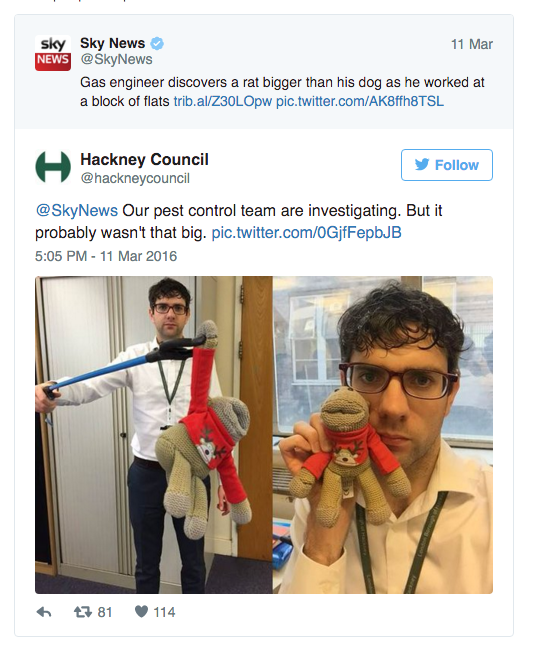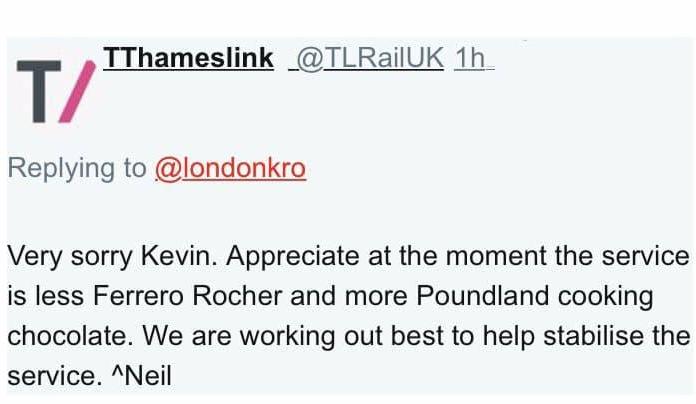When we deliver customer service training for clients, there’s usually a section labelled ‘use of humour’ or something similar. It’s the bit where we discuss the risks and opportunities of using a bit of banter or cracking a joke on social media channels.
There are a few time-honoured examples where humour has been used to deflate a tricky news story:
Gas engineer discovers a rat bigger than his dog as he worked at a block of flats https://t.co/xVGdabAKbw pic.twitter.com/AK8ffh8TSL
— Sky News (@SkyNews) March 11, 2016

Banter between supermarkets (click the tweet to see this in all its glory):
Which is better @AldiUK or @LidlUK ? #questiontime
— Emily Cousins (@emzcousins) August 1, 2017
And McDonald’s excellent save:
Black Friday **** Need copy and link****
— McDonald’s (@McDonaldsCorp) November 24, 2017
These are all good examples because:
- nothing bad happened. No rat infestations in Hackney, no food poisoning at McDonalds.
- in the case of supermarkets and food outlets, most deliver a really excellent, well established service, all of the time. You might not like their brand, the way they are funded or their plastic straws. But most of the time, they’re on top of their game.
Humour in customer service or not?
The problem is, these examples become ingrained in the social customer service playbook 101. They appear in search results for good practice, in marketing presentations and in, er, blog posts about social media training.
So, other organisations pick up these examples, and they appear in white papers and strategy documents for social customer service.
Sometimes they’re train companies, financial institutions and public services. Organisations with hefty responsibilities: services that keep people alive, get them to work or are responsible for their future prosperity and security. Some are also responsible for huge volumes of high value online transactions.
And these services and transactions often leave a lot to be desired, which means humour on social media can be poorly received by customers.

Thameslink and their parent organisation provide a very complex service. At best a necessary evil that hundreds of thousands of people rely on. And they are an organisation facing enormous problems, with little or no affection from any customers.
Efficient, thoughtful customer service on social media has the potential to transform relationships with customers (not to mention make staff feel a bit better about where they work).
But the underlying services or products have to be right in the first place. Social customer service should not be used as a sticking plaster to fix the things that just don’t work. No amount of cheery, rapid responses will improve timetables or make better banking apps.
Show customers how you are helping them
So if your organisation is not particularly popular or is, essentially, a utility company, face up to that fact. Put your effort in to improving the service you provide, and by all means, tell your customers about it on social media. But have some empathy. Grand development plans with a vision for 2020 are no good. Show customers what’s happening on the tracks, on the shop floor, or in the marketplace, right now.
And always remember, unless you are a well-loved brand doing good things, then your customers probably don’t look to you for humour.
They just want you to get on with the job, and answer their questions on social media.
